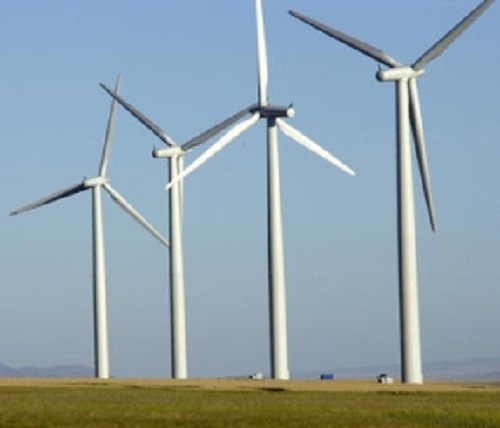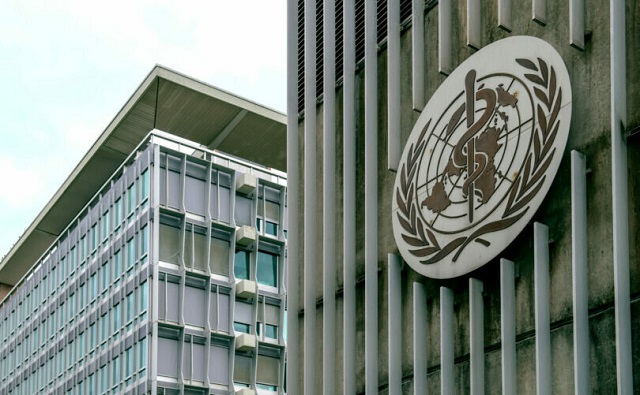Energy
How ‘Green’ projects are looting the treasury

From the Frontier Centre for Public Policy
All that money is wasted. Wind and solar and the various battery projects have not managed to support the electrical grid in any substantial way, hovering, on average, around 4 percent.
The most egregious theft of collective wealth and well-being — and it is flat-out theft — is the churn on “alternative” forms of energy production. Senator Tommy Tuberville of Alabama said last week in an interview with Steve Bannon that the U.S. has spent some $7 trillion over budget in the last three years, and 25 percent of that went to “climate change” projects. They are all like Solyndra, massively subsidized and within a decade, massive failures. “The investors take a tax loss,” said Tuberville, “then move onto the next effort where they again loot the public.” This is salted through all the investment banks, retirement accounts. It represents all putative growth.
In June of 2023, the Department of Energy admitted that it had allocated $1.3 trillion for “clean energy” investment support since 2020, and that spending rose 25 percent from 2021-23. This is a fraction of what was really spent. Further, this money is not only based in debt, thus raising inflation, but it is also raising energy prices. It is the principal reason that almost 25 percent of us, according to economist Peter St. Onge, have been forced to choose between heat and food this winter.
What a choice.
$1,750,000,000, in an annual gift to the rich. The World Economic Forum projects that climate spending in the U.S. will triple over the next ten years. Biden’s “climate” budget is $5.7 trillion. Triple that to $20 trillion. No wonder the market is booming. The U.S. has pledged another half a trillion in “low carbon electricity” under this year’s Paris Climate Accord. And further:
- Among all measures tracked since 2020, direct incentives for manufacturers aimed at bolstering domestic manufacturing of “clean” energy now total to around $90 billion.
- Since the start of the global energy crisis, governments have also allocated $900 billion to short-term consumer affordability measures, additional to pre-existing support programs and subsidies. Around 30 percent of this “affordability” spending has been announced in the past six months, and despite calls to better target households and industries most in need, only 25 percent of affordability measures are targeted towards low-income households and most-impacted industries.
Much of this last $900 billion is direct subsidy to the wealthy in annual subsidies for clean energy. This is again, annual subsidy, so look at the last twenty years. President Obama started this program, therefore, we are looking at a $10 – $ 20 trillion gift to the rich since the Lightbringer took office. What is not counted in these budgets are the losses that accrue from the failure of “green energy” projects, which is the taxpayer’s loss.
Last year, investors in Spain’s green energy collapse took the government to court to claw back subsidies from a dead industry in a country with a debt 400 percent larger than GDP. No wonder millions on the street want to outlaw socialism. As is clear from Spain, when the government runs out of money the first thing to go is the subsidy to green energy, after which the enterprise fails immediately.
In my neck of the Canadian woods, you can install a solar system for $20,000, and get a 25 percent subsidy, as does the installer whose business the government created via “free” “investment.” I live in a rain forest. Which means solar is not available during winter rains and not needed during the summers. Recently everyone with a few extra bucks has taken up the government offer to install heat pumps, also subsidized by between 50 percent and 75 percent. Rain forests mean hydro power, which is essentially, greenhouse-gas-free, and the most inexpensive “fuel,” but an almost-free heat pump? Again win/win for the upper-middle-class because no one in Canada’s increasingly massive working class can afford it.
This model was invented by politicians in power. The first person to notice it was Peter Schweizer; in Throw Them All Out, he details the billionaire investors who funded Obama and who were cashed out via various solar and wind projects. Hundreds of billions of dollars went missing on Obama’s various “clean energy” projects.
This year, every government department is “investing” in clean energy, vis, a quick Google search, will show. Pages and pages of boastful press releases follow. Every agency is in on the boondoggle. NOAA, the National Oceanic and Atmospheric Administration, and the U.S. Patent and Trade Mark Office have signed a collaborative agreement to advance climate technology. Putting aside the fact that “climate change” is neither imminent nor dangerous, the government should not be creating patents. Innovation should be carried out by the private market, where there are controls.
As we discovered during Covid, government patents on both the virus and the vaccine were not subjected to court challenge, double blind testing, or feasibility. There is no number attached to NOAA’s “initiative,” but this is representative of ten thousand such projects salted through every government bureau. All that money is wasted. Wind and solar and the various battery projects have not managed to support the electrical grid in any substantial way, hovering, on average, around 4 percent. Despite this mind-boggling waste of money, in September last year former New York City mayor Michael Bloomberg pledged another $500 billion to shutter the equivalent of 40 percent total electricity use of nine states, including California, Florida, New York, Illinois and Texas.
What has been the result of trillions of public money shunted into “clean” “green” “energy” on the actual energy grid? Robert Bryce, an acknowledged expert, shows that it is failing. A speech he gave at the winter meeting of the National Association of Regulatory Utility Commissioners showed astonishing, across the-board failure in every metric you can imagine.
“Climate Policy” is considered the most significant risk. As Bryce describes, “green energy” has meant Europe is deindustrializing, Ford lost $64,731 for every EV it sold, and the IEA states that global coal use will hit another new record of 8.5 billion tons. Coal use increased 35 percent in last summer’s heat wave. Wind dropped by 21 percent.
Climate policy breaks everything. It breaks communities, it encourages widespread theft of public money, it starves productive work and manufacturing, it has punched down on the less advantaged, and it is destroying the fabric of our lives. And for what?
First published in thepipeline.org, March 24, 2024.
Elizabeth Nickson is a Senior Fellow at the Frontier Centre for Public Policy.
Canadian Energy Centre
First Nations in Manitoba pushing for LNG exports from Hudson’s Bay

From the Canadian Energy Centre
By Will Gibson
NeeStaNan project would use port location selected by Canadian government more than 100 years ago
Building a port on Hudson’s Bay to ship natural resources harvested across Western Canada to the world has been a long-held dream of Canadian politicians, starting with Sir Wilfred Laurier.
Since 1931, a small deepwater port has operated at Churchill, Manitoba, primarily shipping grain but more recently expanding handling of critical minerals and fertilizers.
A group of 11 First Nations in Manitoba plans to build an additional industrial terminal nearby at Port Nelson to ship liquefied natural gas (LNG) to Europe and potash to Brazil.
Robyn Lore, a director with project backer NeeStaNan, which is Cree for “all of us,” said it makes more sense to ship Canadian LNG to Europe from an Arctic port than it does to send Canadian natural gas all the way to the U.S. Gulf Coast to be exported as LNG to the same place – which is happening today.
“There is absolutely a business case for sending our LNG directly to European markets rather than sending our natural gas down to the Gulf Coast and having them liquefy it and ship it over,” Lore said. “It’s in Canada’s interest to do this.”
Over 100 years ago, the Port Nelson location at the south end of Hudson’s Bay on the Nelson River was the first to be considered for a Canadian Arctic port.
In 1912, a Port Nelson project was selected to proceed rather than a port at Churchill, about 280 kilometres north.
The Port Nelson site was earmarked by federal government engineers as the most cost-effective location for a terminal to ship Canadian resources overseas.
Construction started but was marred by building challenges due to violent winter storms that beached supply ships and badly damaged the dredge used to deepen the waters around the port.
By 1918, the project was abandoned.
In the 1920s, Prime Minister William Lyon MacKenzie King chose Churchill as the new location for a port on Hudson’s Bay, where it was built and continues to operate today between late July and early November when it is not iced in.
Lore sees using modern technology at Port Nelson including dredging or extending a floating wharf to overcome the challenges that stopped the project from proceeding more than a century ago.
He said natural gas could travel to the terminal through a 1,000-kilometre spur line off TC Energy’s Canadian Mainline by using Manitoba Hydro’s existing right of way.
A second option proposes shipping natural gas through Pembina Pipeline’s Alliance system to Regina, where it could be liquefied and shipped by rail to Port Nelson.
The original rail bed to Port Nelson still exists, and about 150 kilometers of track would have to be laid to reach the proposed site, Lore said.
“Our vision is for a rail line that can handle 150-car trains with loads of 120 tonnes per car running at 80 kilometers per hour. That’s doable on the line from Amery to Port Nelson. It makes the economics work for shippers,” said Lore.
Port Nelson could be used around the year because saltwater ice is easier to break through using modern icebreakers than freshwater ice that impacts Churchill between November and May.
Lore, however, is quick to quell the notion NeeStaNan is competing against the existing port.
“We want our project to proceed on its merits and collaborate with other ports for greater efficiency,” he said.
“It makes sense for Manitoba, and it makes sense for Canada, even more than it did for Laurier more than 100 years ago.”
Energy
Straits of Mackinac Tunnel for Line 5 Pipeline to get “accelerated review”: US Army Corps of Engineers


From the Daily Caller News Foundation
By Audrey Streb
The Army Corps of Engineers on Tuesday announced an accelerated review of a Michigan pipeline tunnel under the Straits of Mackinac following President Donald Trump’s declaration of a “national energy emergency” on day one of his second term.
Enbridge’s Line 5 oil pipeline is among 600 projects to receive an emergency designation following Trump’s January executive order declaring a national energy emergency and expediting reviews of pending energy projects. The action instructed the Army Corps to use emergency authority under the Clean Water Act to speed up pipeline construction.
“An energy supply situation which would result in an unacceptable hazard to life, a significant loss of property, or an immediate, unforeseen, and significant economic hardship,” if not acted upon quickly, the public notice reads.

U.S. President Donald Trump holds up a signed executive order as (L-R) U.S. Treasury Secretary Scott Bessent, Secretary of Commerce Howard Lutnick and Interior Secretary Doug Burgum look on in the Oval Office of the White House on April 09, 2025 in Washington, DC. (Photo by Anna Moneymaker/Getty Images)
“Line 5 is critical energy infrastructure,” Calgary-based Enbridge wrote to the DCNF. The company noted that it submitted its permit applications to state and federal regulators five years ago and described the project as “designed to make a safe pipeline safer while also ensuring the continued safe, secure, and affordable delivery of essential energy to the Great Lakes region.”
Army Corps’ Detroit District did not respond to the DCNF’s request for a copy of the notice or for comment.
The pipeline has been active since 1953 and extends for 645 miles across the state of Michigan, according to the Department of Environment, Great Lakes, and Energy website. Line 5 supplies 65% of the propane needs in Michigan’s Upper Peninsula and 55% of the state’s overall propane demand, according to Enbridge.
The project has faced legal trouble and permitting delays that have hindered its expansion. Michigan Democratic Gov. Gretchen Whitmer in 2019 used a legal opinion by Attorney General Dana Nessel to argue that the law that created the authority to approve the project “because its provisions go beyond the scope of what was disclosed in its title.”
The State of Michigan greenlit the project in 2021 and the Michigan Public Service Commission approved placing the new pipeline segment in 2023.
Trump has championed an American energy production revival, stating throughout his 2024 campaign that he wanted to “drill, baby, drill,” in reference to oil drilling on U.S. soil.
-

 2025 Federal Election2 days ago
2025 Federal Election2 days agoRCMP Whistleblowers Accuse Members of Mark Carney’s Inner Circle of Security Breaches and Surveillance
-

 Also Interesting2 days ago
Also Interesting2 days agoBetFury Review: Is It the Best Crypto Casino?
-

 Autism2 days ago
Autism2 days agoRFK Jr. Exposes a Chilling New Autism Reality
-

 COVID-192 days ago
COVID-192 days agoCanadian student denied religious exemption for COVID jab takes tech school to court
-

 2025 Federal Election2 days ago
2025 Federal Election2 days agoBureau Exclusive: Chinese Election Interference Network Tied to Senate Breach Investigation
-

 International2 days ago
International2 days agoUK Supreme Court rules ‘woman’ means biological female
-

 2025 Federal Election2 days ago
2025 Federal Election2 days agoNeil Young + Carney / Freedom Bros
-

 Health2 days ago
Health2 days agoWHO member states agree on draft of ‘pandemic treaty’ that could be adopted in May








